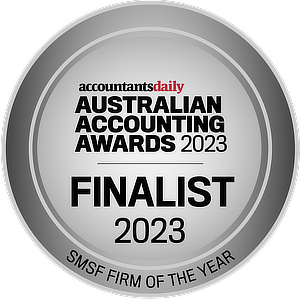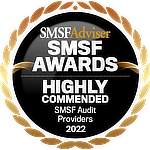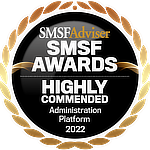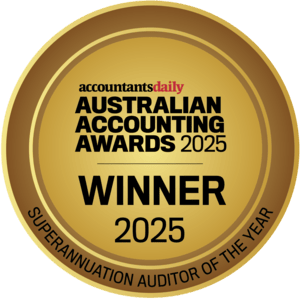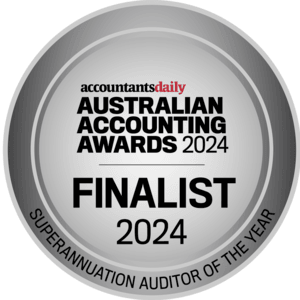To some degree there have always been scenarios where SMSF trustees have been forced to present their annual accounts using a market valuation for all assets. For example, if a fund is in pension phase market valuation is required so that the pension minimums are correctly stated. Also, in the case of a fund where an in-house asset is held, everything must be valued at market so that the 5% market value threshold can be observed for compliance purposes.
Things have changed since SIS Reg 8.02B was enacted in August 2012. It requires all assets to be states at market value when presented in financial accounts from the 2012/13 financial year. This presents a mix of challenges for accountants and trustees when readying their fund for its annual audit. It is also good for accountants and trustees to understand what the role of their auditor is in this process.
Audit Guidance Statement GS009, is the auditors handbook for how to conduct an audit over an SMSF. It provides a great insight as to the role of the auditor in the process…
“It is not the role of the auditor to value the assets. The role of the auditor is to check that assets have been reported at market value, and assess and document whether the basis of establishing market value is reasonable and the valuation is reasonable in light of the SISA, SISR, and ATO guidelines. The auditor assesses the risks of material misstatement of the asset values, designs and performs audit procedures and documents conclusions in response to the assessed risks.”
There is a wide body of guidance available from the ATO to assist trustees and accountants in determining what the market value of fund assets is:
The more detailed audit standards surrounding asset valuation are found in Auditing Standard ASA 540 Auditing Accounting Estimates, Including Fair Value Accounting Estimates, and Related Disclosures
For listed securities and widely held public trusts, valuation isn’t an issue as there is easily obtainable market valuation data. Things become a bit more tricky where property is involved and in many cases it can be downright problematic where unlisted shares and trusts are the assets requiring valuation. We shall explore the issues across several asset classes.
Who can value a fund asset?
The only scenario in which the legislation mandates that a qualified independent valuer be brought in is in the case of collectible and personal use assets.
These are the circumstances which would require such a valuer to be engaged:
- From 1 July 2011 for any collectibles and personal use assets that were acquired on or after 1 July 2011 and disposed of to a related party.
- From 1 July 2016 for any collectibles or personal use assets that were acquired by the SMSF before 1 July 2011 and disposed of to a related party after 30 June 2016.
Otherwise, the person making the valuation must be able to demonstrate that they have used a fair and reasonable process whilst formulating it.
The indicators of a fair and reasonable process are:
- It takes into account all relevant factors and considerations likely to affect the value of the asset.
- It has been undertaken in good faith.
- It uses a rational and reasoned process.
- It is capable of explanation to a third party.
One of the key points underpinning the formulation of a valuation is that the person making the assessment must have sufficient skills and market knowledge to make the assessment. These factors will differ between asset classes.
To follow is some commentary broken down by asset class about making market value assessments and what things an auditor will look at when assessing the veracity of the valuation.
Property Valuation
When valuing property there are a number of factors that can be considered. These include:
- The amount that was originally paid for the property in an arms’ length market
- Recent sales of similar properties in the area
- Knowledge of what the market is doing in the area
- A previous valuation made on the property by someone with expertise in the area
- Whether there have been any improvements made to the property since the last valuation
- Rental yields in the case of commercial properties.
The more of these elements brought into the reasoning, the stronger the valuation. The SMSF auditor will also look at these factors when assessing whether the valuation appears reasonable.
A common practice for ascertaining market value is for the trustee to approach a real estate agent with expertise in the local area and ask for an appraisal. They might do this every three years and just use their own judgement and knowledge of the market in the intervening years to assess any incremental change in value.
The need for more formal independent valuation really only comes into play when there is a higher risk associated with what the value is being used to underpin. For example, we would recommend obtaining a proper independent value from a certified valuer if the super fund was to sell or buy a property to or from a related party.
The bottom line is that you must be able to prove to your auditor that the valuation is objective and supported by factual data.
Unlisted Shares and Trusts
The main area of concern that we constantly see crop up is where there isn’t a ready market or transparent market for the asset in question. Examples of assets which are quite problematic to pin a value on include unlisted shares and trusts where the underlying activity might be something like research and development or property development.
For such entities, the first thing that needs to be done is to have a look at what the underlying assets of the entity are and what activities it engages in. Then with this knowledge a variety of methods of valuation may be employed.
A really good place to start for such entities is to see if there have been any recent arms’ length transactions of units or shares. This can be used to substantiate market valuation.
For property rich entities, the same sorts of things can be considered as detailed above in the property valuation section. The directors or financial controller of the entity are often approachable and are able to give their informal opinion of the market value of the property under their control.
In the case of an entity which is undertaking a property development, it is often difficult to provide valuation data in the early stages of the development. This is due to the high risk involved and the number of unknown factors which may affect the ultimate outcome of the development. In this circumstance we suggest that the trustees document the situation and given all known factors, make a resolution as to value. In many cases it may be appropriate to leave the value at cost as it will be the most accurate approximation of value. As however the development progresses, things like the number of pre-sales can be looked at, which will in turn allow for profits or losses to more accurately be projected. These projections should be used to ascertain value.
For entities which run a business, business valuation modelling may be used to ascertain market value. The ATO give guidance as to appropriate methodologies. Such modelling will often require the input of a professional with expertise in the field.
The Bottom Line
Again we make reference to GS009 about what an auditor is expected to do if a valuation is either not provided or does not pass the audit tests employed against it…
“Where the auditor is unable to form an opinion in assessing whether the valuation is in accordance with the financial reporting framework adopted, due to uncertainty, and no expert valuation can be obtained, the auditor considers modification of the auditor’s report, taking into account materiality and the risk of material misstatement. The auditor is required to report to the ATO in an ACR where there is a contravention or potential contravention of regulation 8.02B of the SISR.”
At Aquila Super, we are proactive in assisting our clients to stay ahead of the game and to keep on top of things like market valuations. If you or one of your clients believe you have a market valuation issue, we encourage you to contact an expert adviser at Aquila Super for assistance.


